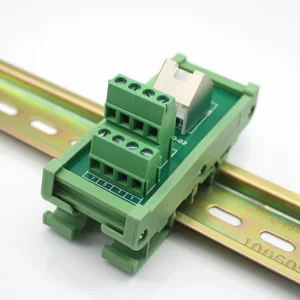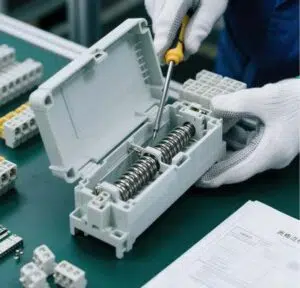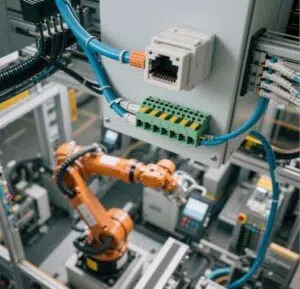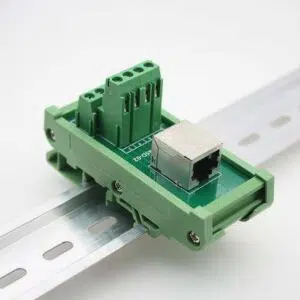In today’s interconnected industrial landscape, the RJ45 to terminal block adapter has become indispensable. This component provides a robust and flexible solution for integrating Ethernet and other network signals into control systems and machinery. Essentially, it translates the standardized RJ45 interface into individual screw or spring-cage terminals, facilitating reliable field wiring.
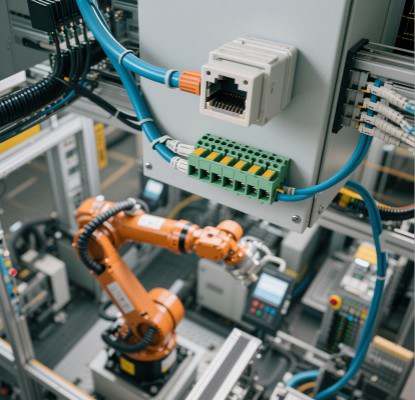
Choosing the correct terminal block is paramount in industrial environments. System efficiency, operational safety, and network reliability directly hinge on this decision. A poorly chosen or installed terminal can lead to signal degradation, intermittent connections, and potential downtime. Optimal selection ensures secure, long-lasting connectivity, minimizing troubleshooting and maximizing productivity in demanding applications.
Part 1.Understanding RJ45 Terminal Blocks and Their Role
An RJ45 to terminal block adapter is a crucial industrial networking interface. It features an RJ45 female to terminal block connector on one side for standard Ethernet cables, and individual screw or spring-cage terminals on the other. This design efficiently translates RJ45 pins into easily wired connections, enabling custom cable lengths or direct network signal integration into control panels.
Applications and Criticality in Industrial Automation
In industrial automation, these adapters are indispensable for linking network cables to PLCs, HMI panels, sensors, and other field devices. They enable robust data transmission over Ethernet, forming the backbone for SCADA, MES, and IIoT applications. They provide a secure, vibration-resistant, and easily serviceable point for network connections, significantly reducing troubleshooting time and enhancing system uptime in harsh industrial environments.
Part 2.Key Considerations for Selecting RJ45 to Terminal Block Adapters
Choosing the right RJ45 to terminal block adapter ensures reliable industrial networking. Focus on these critical factors:
1)Network Compatibility
Verify support for Cat5e/6/6a standards to maintain bandwidth and signal integrity. Mismatched adapters risk data loss or crosstalk.
2)Durability for Harsh Environments
Prioritize robust housings, wide temperature ranges (-40°C to +85°C), and IP ratings (e.g., IP20/IP67) to withstand dust, moisture, and vibration.
3)Installation Efficiency
- Screw terminals: Secure, torque-stable connections for permanent installations.
- Push-in terminals: Tool-free, vibration-resistant wiring for rapid deployment.
Pro Tip: Match the terminal type to your maintenance workflow—screw terminals for serviceability, push-in for high-density setups.If you’re unsure how to select the right terminal type for your specific needs, feel free to contact our AOSI supplier. Our professionals will provide expert guidance for you.
Part 3.Varieties of RJ45 Terminal Blocks in Industrial Automation
The landscape of RJ45 to terminal block adapters offers diverse configurations, each suited to specific industrial demands.
| Classification | Type | Key Traits | Best For |
|---|---|---|---|
| Modular/Non-Modular | Modular | Pluggable, flexible | Dynamic environments with frequent changes |
| Non-Modular | Fixed, robust | Stable setups needing reliability | |
| Shielded/Unshielded | STP | EMI-resistant, uses shielded cables | High-interference areas (motors, VFDs) |
| UTP | Cost-effective, simple | Low-interference environments | |
| Single/Multi-Port | Single-Port | Dedicated, clean interface | Individual device connections |
| Multi-Port | Space-saving, consolidated links | Crowded control cabinets |
Part 4.Optimizing Connectivity: Wiring and Network Considerations for RJ45 Terminal Blocks
Effective implementation of RJ45 to terminal block adapters requires meticulous planning concerning wiring and network demands.
Cable Management
Proper cable management is paramount for network performance and RJ45 female to terminal block connection longevity. Neatly routing cables prevents physical damage, reduces strain, and minimizes accidental disconnections, enhancing signal integrity by isolating from EMI.Ignoring this can lead to frustrating intermittent issues and increased troubleshooting time.
Power and Data Transmission Needs
When integrating devices via an RJ45 to terminal block adapter, assess both power and data transmission requirements, especially for PoE. Ensure your chosen adapter safely supports power alongside data. Terminal block quality, shielding, and contact resistance directly impact data stability, preventing packet loss and ensuring throughput, even at higher Ethernet speeds.
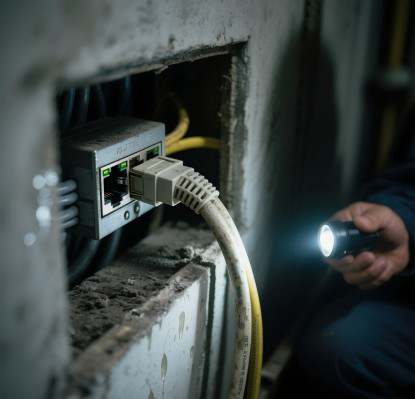
Future-Proof Connectivity: Scalable Terminal Block Solutions
For future-proof connectivity, select scalable RJ45 to terminal block solutions. These allow modular expansion and easy upgrades for increasing bandwidth, accommodating higher densities and evolving standards, minimizing downtime. While specific RJ45 male to terminal block applications exist for custom fabrication, prioritizing scalable interfaces ensures operational efficiency and adaptability.
Part 5.Maintenance & Troubleshooting: Ensuring Reliable Terminal Block Performance
To maximize network uptime, implement regular inspections of RJ45 to terminal block adapterconnections. Verify secure terminations, check for corrosion, and ensure proper strain relief to prevent signal degradation. For installations, test continuity and inspect pins for wear or misalignment.
Common issues like signal loss or intermittent connectivity often stem from loose contacts or improper crimping. Use a cable tester to diagnose faults, and reseat connections if necessary. For RJ45 male to terminal blocksetups, ensure wire gauge compatibility and torque screws to manufacturer specs to prevent overheating.

Long-term reliability depends on proactive maintenance:
- Clean contacts with isopropyl alcohol to prevent oxidation.
- Schedule periodic re-tightening of screw terminals.
- Monitor environmental factors (humidity, vibration) that may affect performance.
By following these best practices, industrial networks can minimize downtime and maintain peak efficiency.
Conclusion
When selecting an RJ45 to terminal block adapter, key considerations include:
- Compatibility with existing cabling and equipment
- Durability for industrial environments (vibration/heat resistance)
- Scalability to support future network expansions
Proper selection directly impacts operational efficiency and maintenance costs—high-quality adapters reduce downtime while simplifying troubleshooting.
For optimal performance, consult AOSI‘s technical experts to evaluate your specific requirements. Our team provides customized solutions to ensure reliable, future-proof connectivity.

